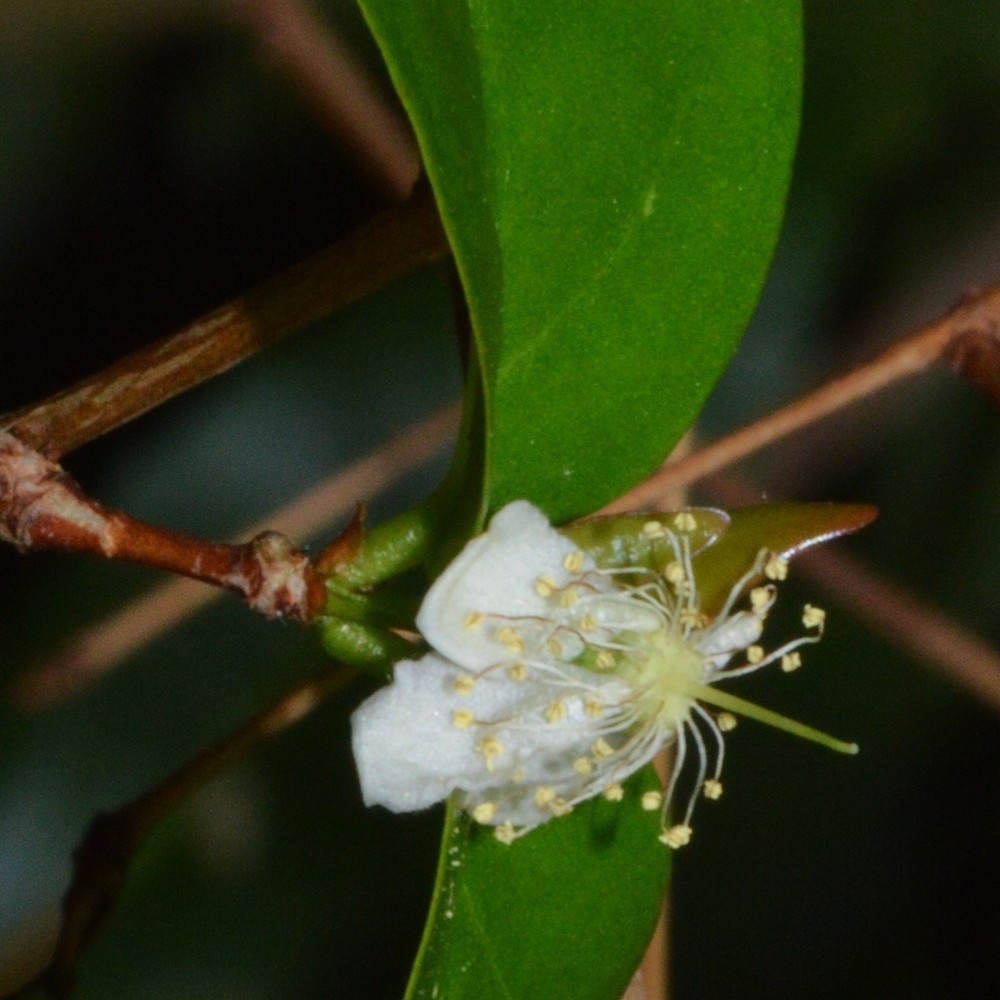Suriname cherry
(Eugenia bergii)

Description
Eugenia uniflora, the pitanga, Suriname cherry, Brazilian cherry,Cayenne cherry,cerisier carré, monkimonki kersie or ñangapirí, is a flowering plant in the family Myrtaceae, native to tropical South America’s east coast, ranging from Suriname, French Guiana to southern Brazil, as well as Uruguay and parts of Paraguay and Argentina. It is often used in gardens as a hedge or screen. The tree was introduced to Bermuda for ornamental purposes but is now out of control and listed as an invasive species. The tree has also been introduced to Florida. Eugenia uniflora is a large shrub or small tree with a conical form, growing slowly to 8 metres (26 ft) high. When bruised, crushed or cut, the leaves and branches have a spicy resinous fragrance, which can cause respiratory discomfort in susceptible individuals. The leaves are without stipules, ovate, glossy and held in opposite pairs. New leaves are bronze, copper or coppery-pinkish in color, maturing to a deep glossy green, up to 4 centimetres (1.6 in) long. During winter the leaves turn red. Flowers have four white petals and are borne on slender long stalks, with a conspicuous central cluster of white stamens ending in yellow anthers. Flowers develop into ribbed fruits 2 to 4 centimetres (0.79 to 1.57 in) long, starting out as green, then ranging through orange, scarlet and maroon as they ripen. Because the seeds are distributed by fruit-eating birds it can become a weed in suitable tropical and sub-tropical habitats, displacing native flora.
Taxonomic tree:







